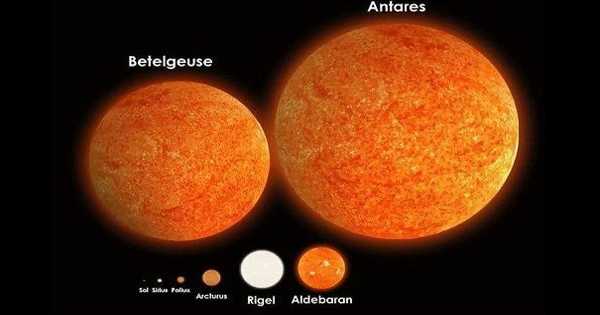After dazzling radar reflections were observed and initially attributed to water, scientists have been debating what might lie beneath the Martian planet’s south polar cap for years.
However, a new study headed by planetary scientists at York University’s Lassonde School of Engineering, published in Geophysical Research Letters, disproves that notion and shows for the first time that another material is most likely the answer.
Multiple lines of evidence show that smectites, a common type of clay, can explain all of the observations, putting the Mars lake theory on ice, according to research led by Isaac Smith, Canada Research Chair and assistant professor of Earth and Space Science at Lassonde School of Engineering and research scientist at the Planetary Science Institute.
“Since being first reported as bodies of water, the scientific community has shown skepticism about the lake hypothesis, and recent publications questioned if it was even possible to have liquid water,” said Smith.
The amount of salt and heat required to thaw ice at the bottom of the polar cap was much more than Mars provides, according to papers published in 2018 and 2021, and recent evidence that these radar detections are much more widespread to places even harder to thaw ice casts further doubt on the theory.
Smectites can better explain the radar data made by the MARSIS instrument aboard the European Space Agency’s Mars Express orbiter, according to the research team, which comprises researchers from the University of Arizona, Cornell, Purdue, and Tulane institutions. They also discovered spectral evidence suggesting smectites are present near the south polar cap’s borders.
We analyzed the MARSIS radar data and identified observations with high-power values at the base of the south polar layered deposits, both in the proposed lake region and elsewhere.
Jenny Whitten
“Smectites are very abundant on Mars, covering about half the planet, especially in the Southern Hemisphere,” said Smith. “That knowledge, along with the radar properties of smectites at cryogenic temperatures, points to them being the most likely explanation to the riddle.”
The radar properties of hydrated smectites were investigated at ambient temperature and cryogenic temperatures in experiments conducted at York University. The two quantities that make up the radar characteristics are the real and imaginary components of the dielectric constant.
Both numbers are necessary for fully defining a material, however, the 2018 study relied on modeling that only took into account the actual part of the dielectric value, excluding some kinds of materials, such as clays.
Data was analyzed using code when the experimental measures were completed. Researchers discovered that frozen clays have numbers large enough to create the reflections in these simulations.
When basalt (the volcanic rock that makes up the majority of Mars’ surface) breaks down chemically in the presence of liquid water, smectites develop.
“Detecting possible clay minerals in and below the south polar ice cap is important because it tells us that the ice includes sediments that have interacted with water sometime in the past, either in the ice cap or before the ice was there,” said Briony Horgan, co-author and associate professor in Earth, Atmospheric, and Planetary Sciences at Purdue University.
“So, while our work shows that there may not be liquid water and an associated habitable environment for life under the cap today, it does tell us about water that existed in this area in the past.”
Smith conducted experiments in his lab with equipment designed to measure dielectric values to back up his new hypothesis. His team froze the clays to -50o C and measured them again to recreate the conditions beneath Mars’ south polar cap as closely as possible, which had never been done before.
The infrared absorptions attributed to these minerals can be found in the south polar orbital visible-near infrared reflectance spectra, according to Smith. The team argues that this is a more feasible hypothesis than the presence of liquid water because these minerals are both present near the south pole and can generate the reflections. There is no need for salt or heat.
“We used our lab measurements of clay minerals as the input for a radar reflection model and found that the results of the model matched very well with the real, observed data,” said Dan Lalich, post-doctoral researcher at the Cornell Center for Astrophysics and Planetary Science at Cornell University and second author on the study.
“While it’s disappointing that liquid water might not actually be present below the ice today, this is still a cool observation that might help us learn more about conditions on ancient Mars.”
“We analyzed the MARSIS radar data and identified observations with high-power values at the base of the south polar layered deposits, both in the proposed lake region and elsewhere,” said Jenny Whitten, co-author and planetary scientist in the Department of Earth and Environmental Sciences at Tulane University.
“The first reason the bright reflectors cannot be water is because some of them continue from underground onto the surface. If that is the case, then we should see springs, which we don’t,” said Stefano Nerozzi, post-doctoral fellow in the Lunar and Planetary Laboratory and Department of Geosciences at the University of Arizona and co-author.
“Not only that, but multiple reflectors are stacked on top of each other, and some are even found right in the middle of the polar cap. If this were water, this would be physically impossible.”
Putting the results in perspective Smith says the answer is clear.
“Now, we have the trifecta. One, we measured dielectric properties of materials that are known to exist on over 50 per cent of Mars’ surface and found them to have very high values. Two, we modelled how those numbers would respond in Mars’ south-polar conditions and found them to match the radar observations well. Three, we demonstrated that these minerals are at the south pole.”
The liquid water theory was previously unlikely since it required enormous quantities of heat, six to eight times more than Mars delivers, as well as more salt than Mars contains. With no qualifiers or asterisks, the clays can now explain the observations.
















